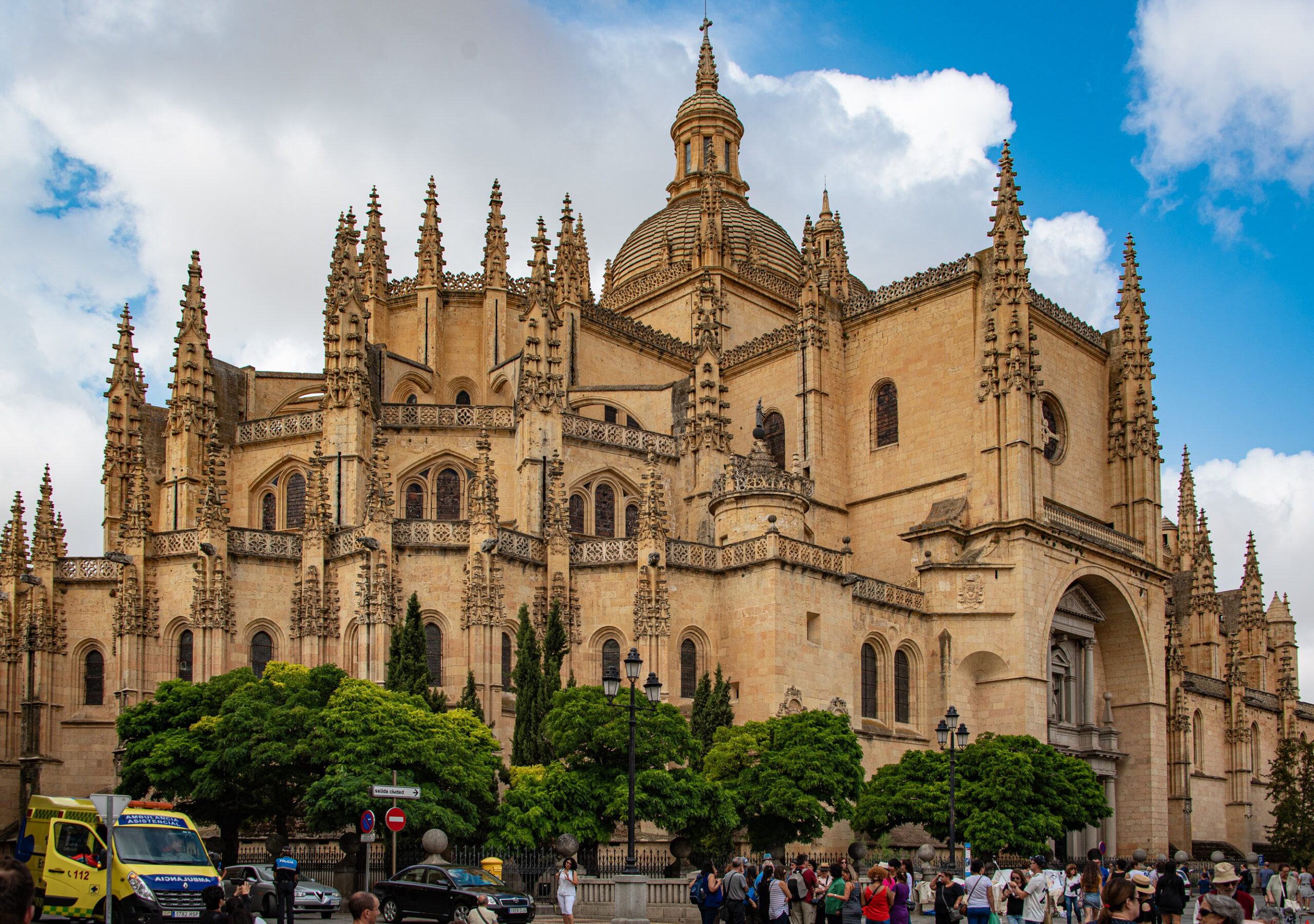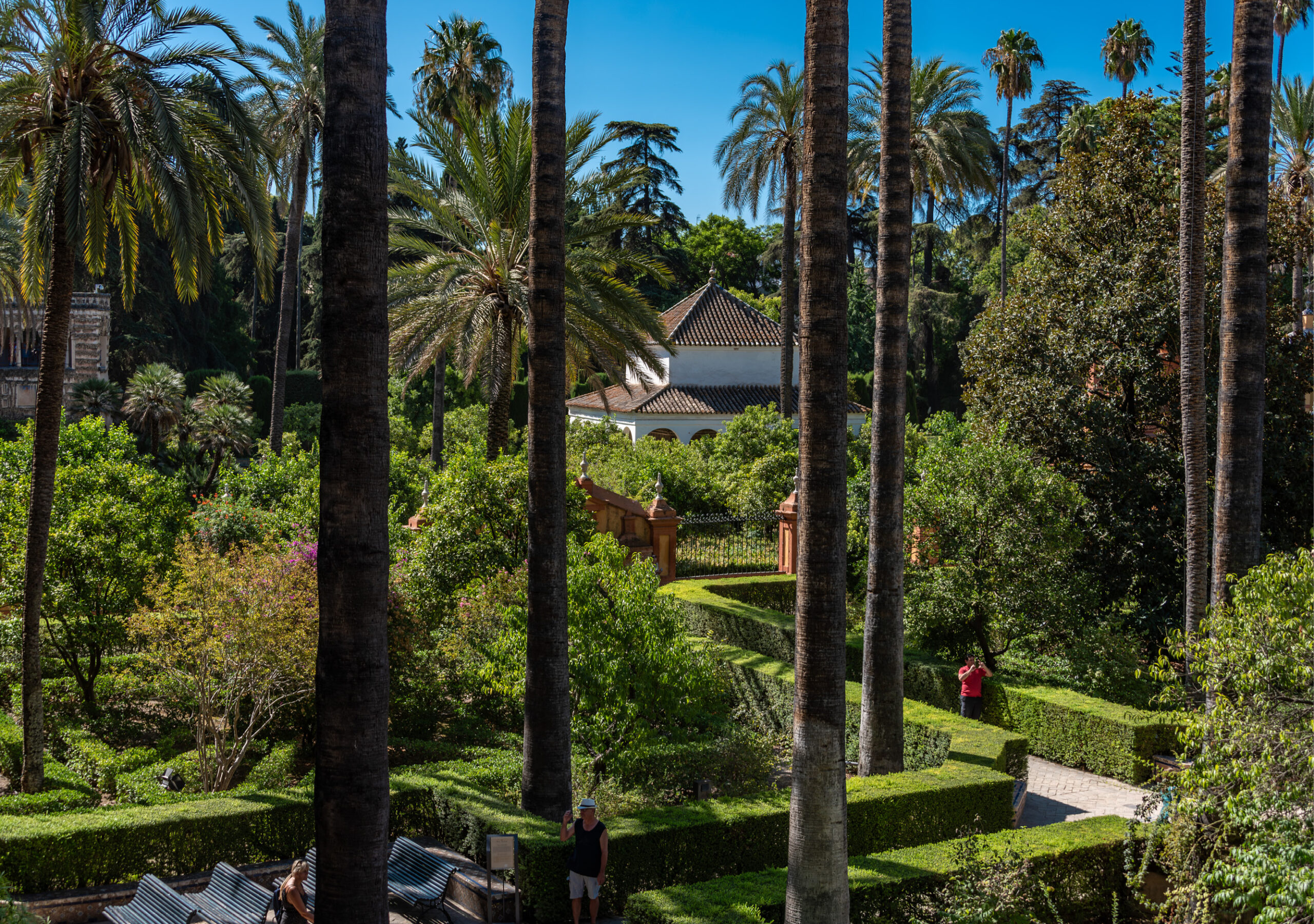So, you’re going to Madrid? You will love this vibrant, beautiful and welcoming city. So many interesting sites to see, neighborhoods to explore, friendly cafes, bars and hot spots for hanging out––they guarantee you’ll enjoy yourself.
Spain is also rich in historically and culturally attractive cities and towns. Plan your travels to Madrid to include visiting a few other places in the region. And make those journeys by train. The trains in Spain fall plainly at the top of transportation options; the system is well developed across much of the country.
On our two-week trip to Spain, four of us took high-speed trains to three outstanding destinations that are well worth your visit. We made a day trip to Segovia; the other two cities took us south into Moorish Andalucía––Córdoba for two nights and Seville for three nights. Each place rewarded us with eye-popping sights. Hi-speed, modern trains hurled us rapidly to our destinations, while we relaxed in clean cars with comfortable seats, dreamily gazing at the Iberian countryside and small towns whizzing by.
Step back in time in medieval Segovia
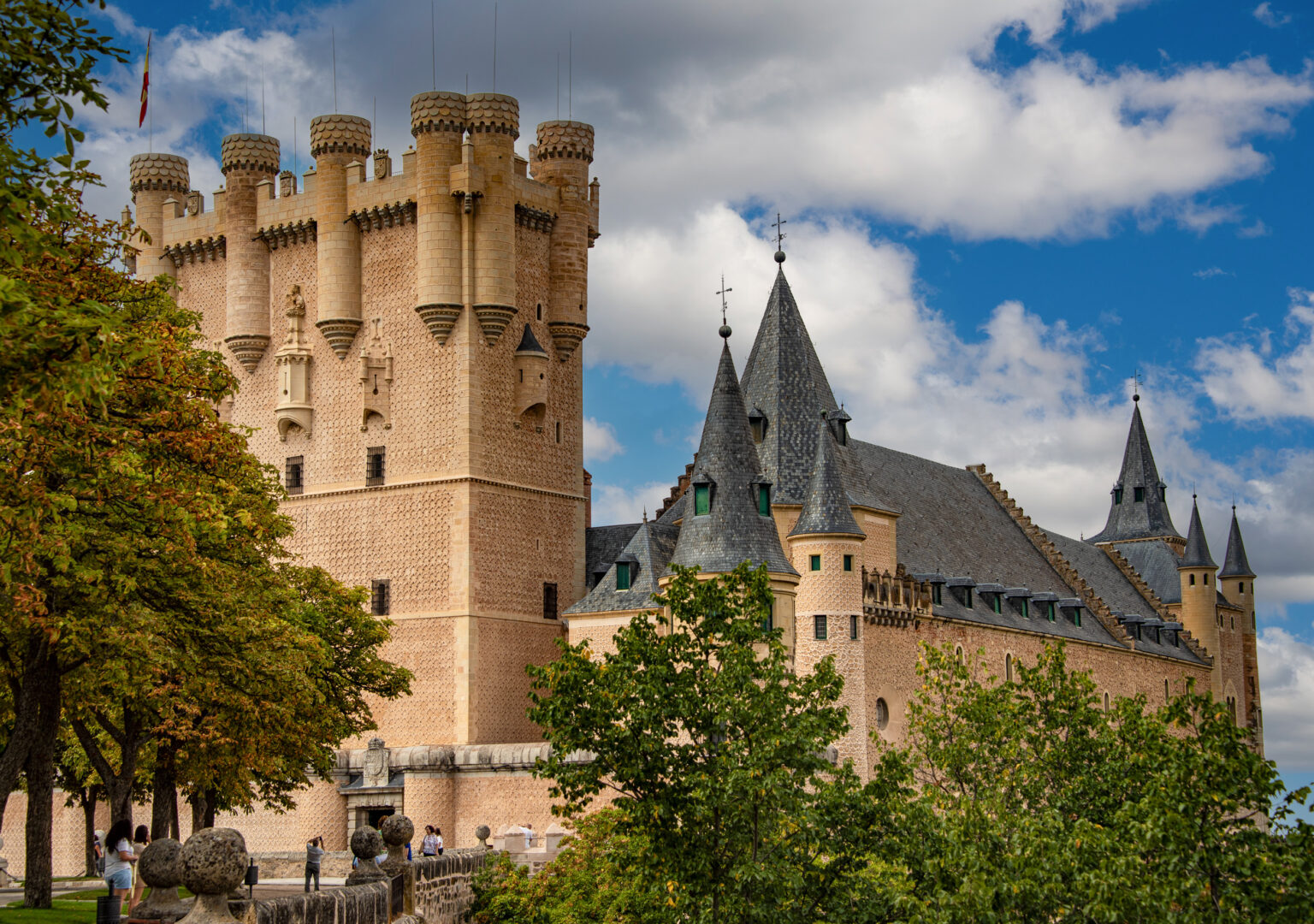
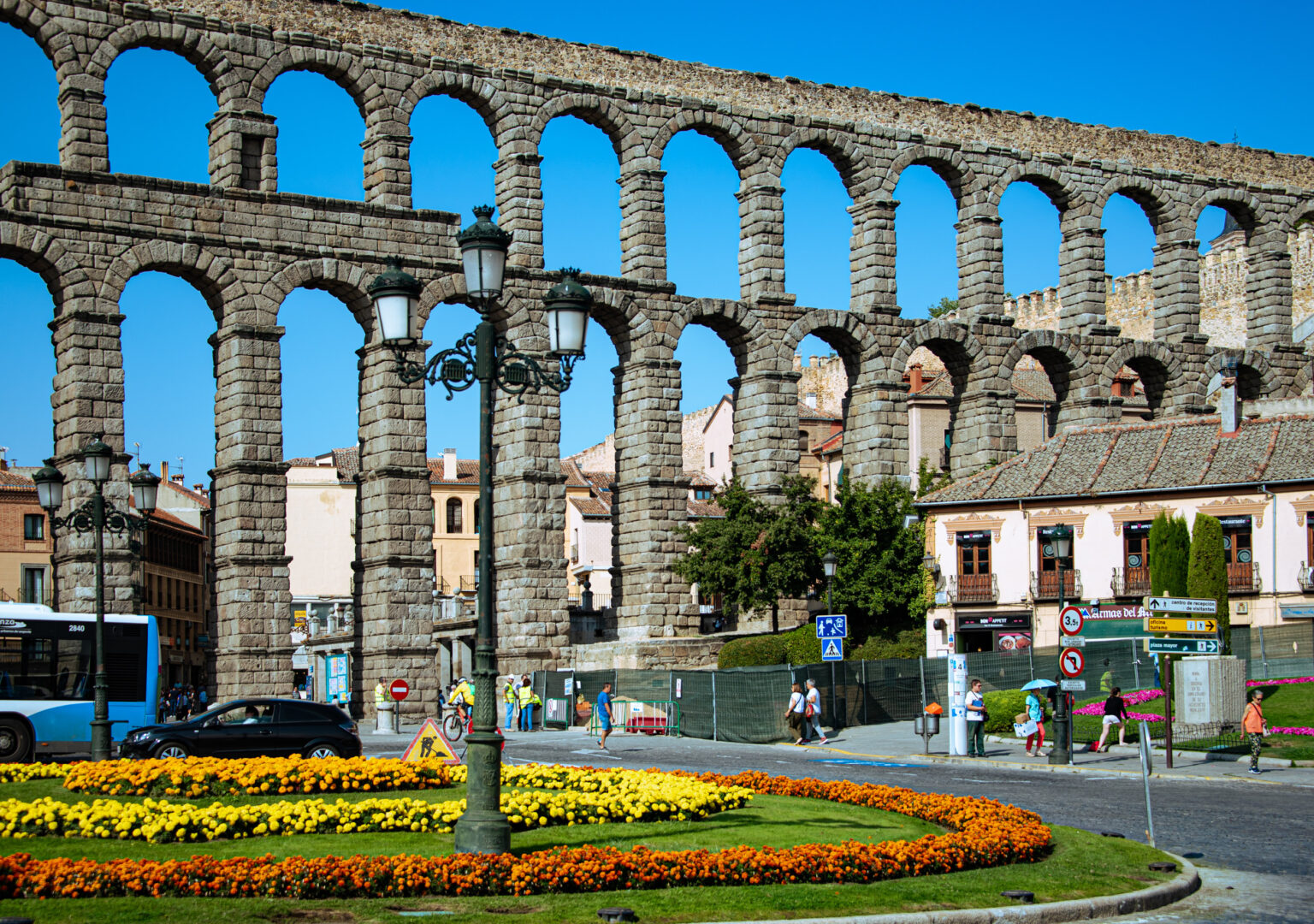
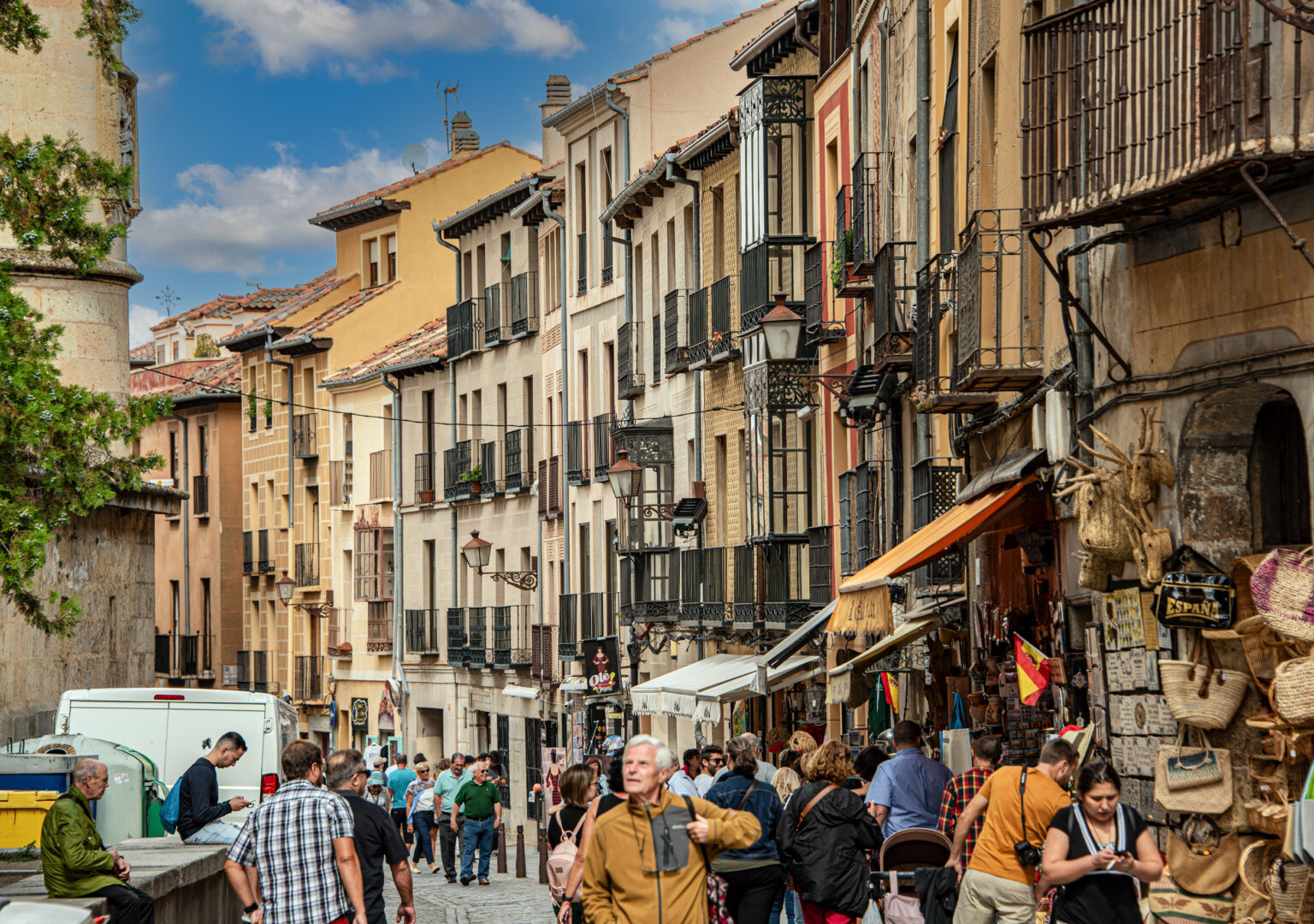
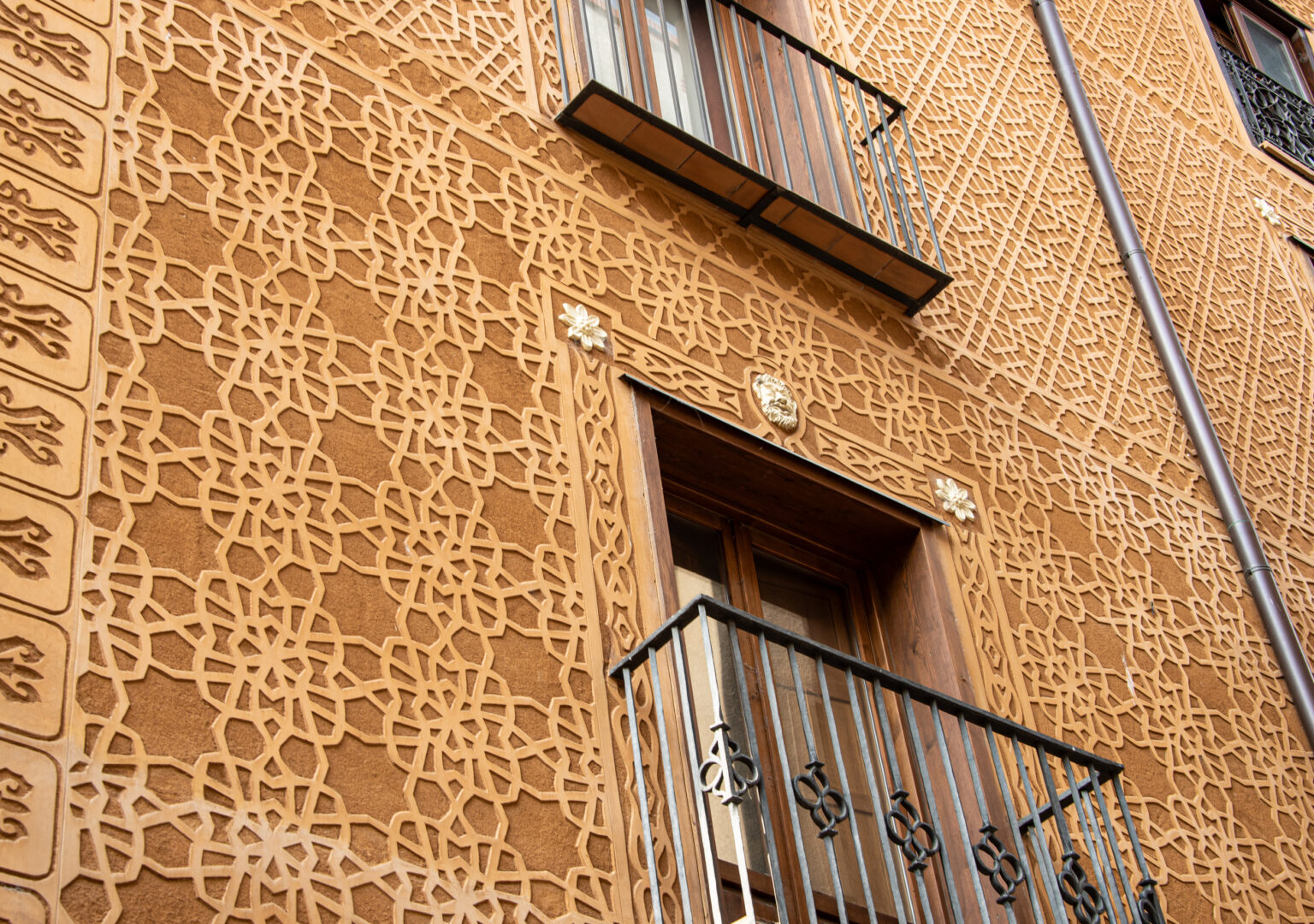
Only 27 minutes from Chamartín station in north Madrid, pretty Segovia is an easy, must-see day trip, with three special attractions.
From its station, we hopped on the #11 shuttle bus that dropped us off at the…OMG! Look at that! A gigantic Roman aqueduct, reaching 95 feet skyward, its 36 sets of arches constructed of enormous, unmortared granite blocks. (Outside the city, the aqueduct contains another 166 sets of arches over a ten-mile stretch.) Built around the first century A.D. (it’s been repaired several times) the aqueduct carried water from local mountains to fill the town’s fountains, public baths, household cisterns and later to its Alcázar Palace (more about that to come). This UNESCO World Heritage site operated until 1973.
The aqueduct serves as an unofficial entrance to the town’s baroque, medieval historic center and its main street that winds up a hill to the Plaza Mayor. Lining the street––a unique collection of civic, commercial and residential buildings with unusual façade treatments, small balconies, some adorned with window boxes overflowing with colorful flowers.
Arriving at Segovia’s central plaza, the generous space hosted Thursday’s weekly market, Mercadillo de Plaza Mayor. Juicy locally grown oranges left a delicious sticky mess in our hands.
The Cathedral and Palace are monumental
Commanding the town’s highest point at the plaza’s west end sits Segovia’s second spectacle––the massive Flamboyant Gothic-styled cathedral, like a tiered wedding cake rising 160 feet high, the dozens of spires resembling candles. The structure easily filled my camera lens. The interior is plainer than I expected. The elaborately carved choir displays fine workmanship. Oddly, iron bars imprison the altar. A life-sized cast of a very bloody Jesus freshly removed from the cross momentarily shocked my senses.
We were running out of time before our return train to Madrid departed. Leaving my companions resting on a low cathedral wall, I rushed down a side street for several blocks to catch a view of the third architectural highlight, Alcázar, the renowned twelfth century baroque palace, yet another UNESCO site that supposedly served as the model for Walt Disney’s Cinderella Castle. Too late to get near and prowl around inside, I used my telephoto lens to see details of this fanciful edifice, claimed to be a prime example of “power architecture”––impenetrable walls, deep moat, and handsome towers. Twenty-two kings called the castle home over the centuries.
On to Andalucía via high-speed train
We purchased one-way tickets to Córdoba and boarded the AVE high-speed train (Alta Velocidad Española) at Madrid’s main train station––glorious, nobly designed Atocha station. After two relaxing hours watching Andalucían farms, olive groves, and rugged landscapes rush by, we arrived in Córdoba (pronounced KOR-do-bah), at one time the largest city in Europe, “the Rome of its time,” rivaling the riches of Istanbul and Baghdad for the Moors.
For eight centuries during the Middle Ages, the Moors of North Africa (Muslims) ruled all or parts of Spain and Portugal, Sicily, and Malta. Their sophisticated empire, centered in Córdoba, stood tall in a Europe that suffered the throes of the Dark Ages. Instead, the Moorish rulers of Andalucía created a society that excelled in learning and education, the arts and architecture, civic practices, and religious tolerance.
That is, until the Christians finally pushed them completely out of Europe around 1500 A.D. The Moors left behind stunning architectural creations; gratefully, the conquering Christians recognized their exquisite buildings and decorative arts and repurposed many of them rather than destroy them.
Córdoba's La Mezquita-Cathedral is an Unbelievable Site
We checked into the beautiful Amistad Hotel for two nights, located in the heart of the old walled city (be sure to stay inside the walls), adjacent to what was originally the atmospheric Jewish Quarter and only a few minutes’ walk from the spectacular La Mezquita-Cathedral. Of course, it’s a UNESCO World Heritage site. In fact, Córdoba is the only city worldwide with four such designated sites, making this town an “I-have-to-visit-here” destination.
Here’s what makes La Mezquita-Cathedral a flat-out wonder.
La Mezquita mosque is an extraordinary example of Moorish architecture built in the tenth century. The building’s footprint covers an area slightly less than Rome’s St. Peter’s Basilica. Once inside the complex’s walls, I passed through an orange grove (the Moors brought these citrus trees from Africa) and the “gasp” experience struck me.
I entered the huge, cavernous, hushed space of 850 double arches striped red and yellow, supported by columns of jasper, onyx, marble, and granite. Farther into the interior, the most exquisite aspect of the mosque is the mihrab (prayer niche), dazzling with its 1600 inlaid gold mosaic cubes and a solid marble block carved in the shape of a shell, the symbol for the Quran.
Along come the Christians in the mid-thirteenth century with their first successful effort to push the Moors farther south, regaining control of Córdoba. Tradition would have dictated reducing the mosque to rubble and replacing it with a church. But instead, apparently appreciating this architectural gem, they built a cathedral inside the mosque!
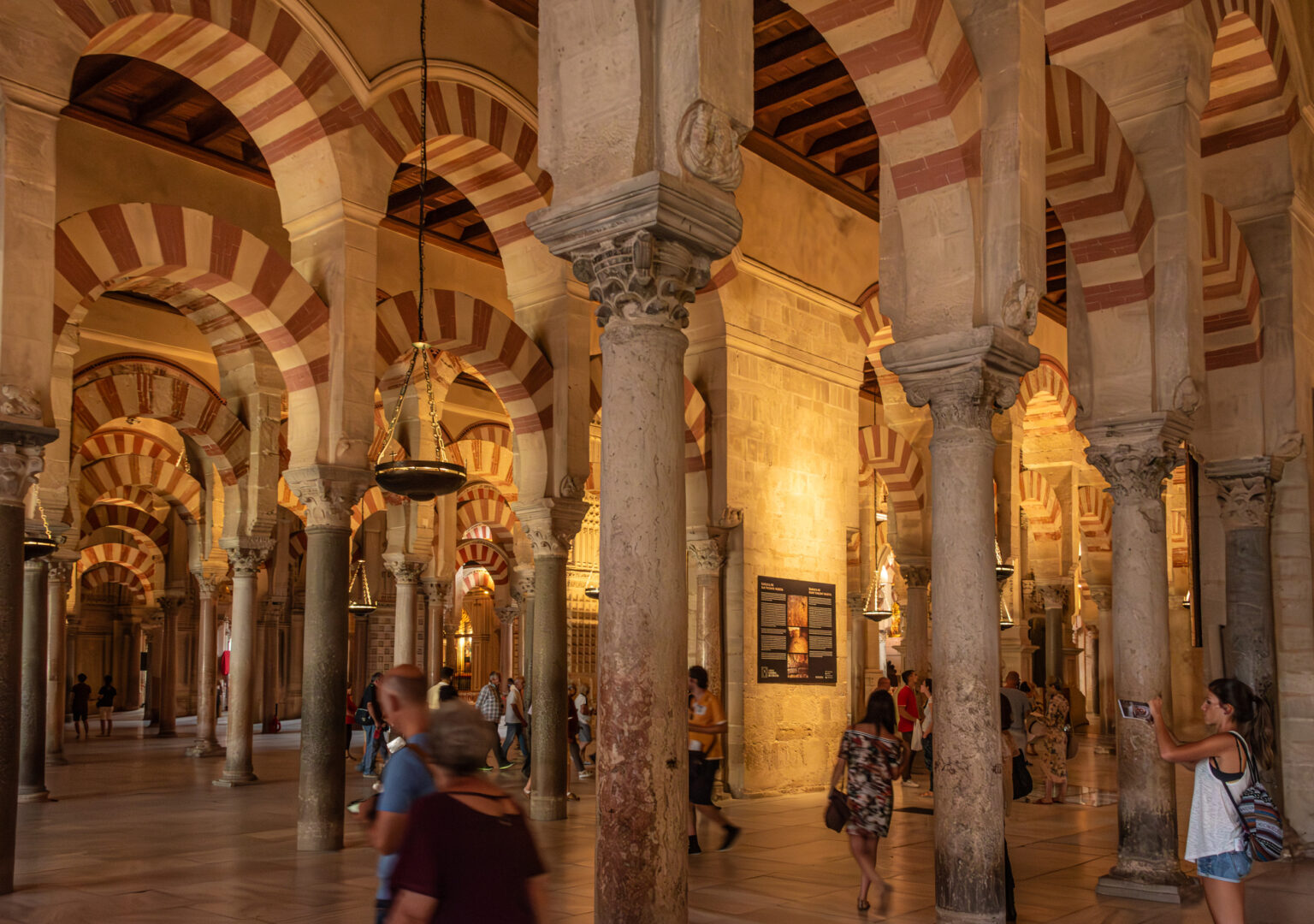
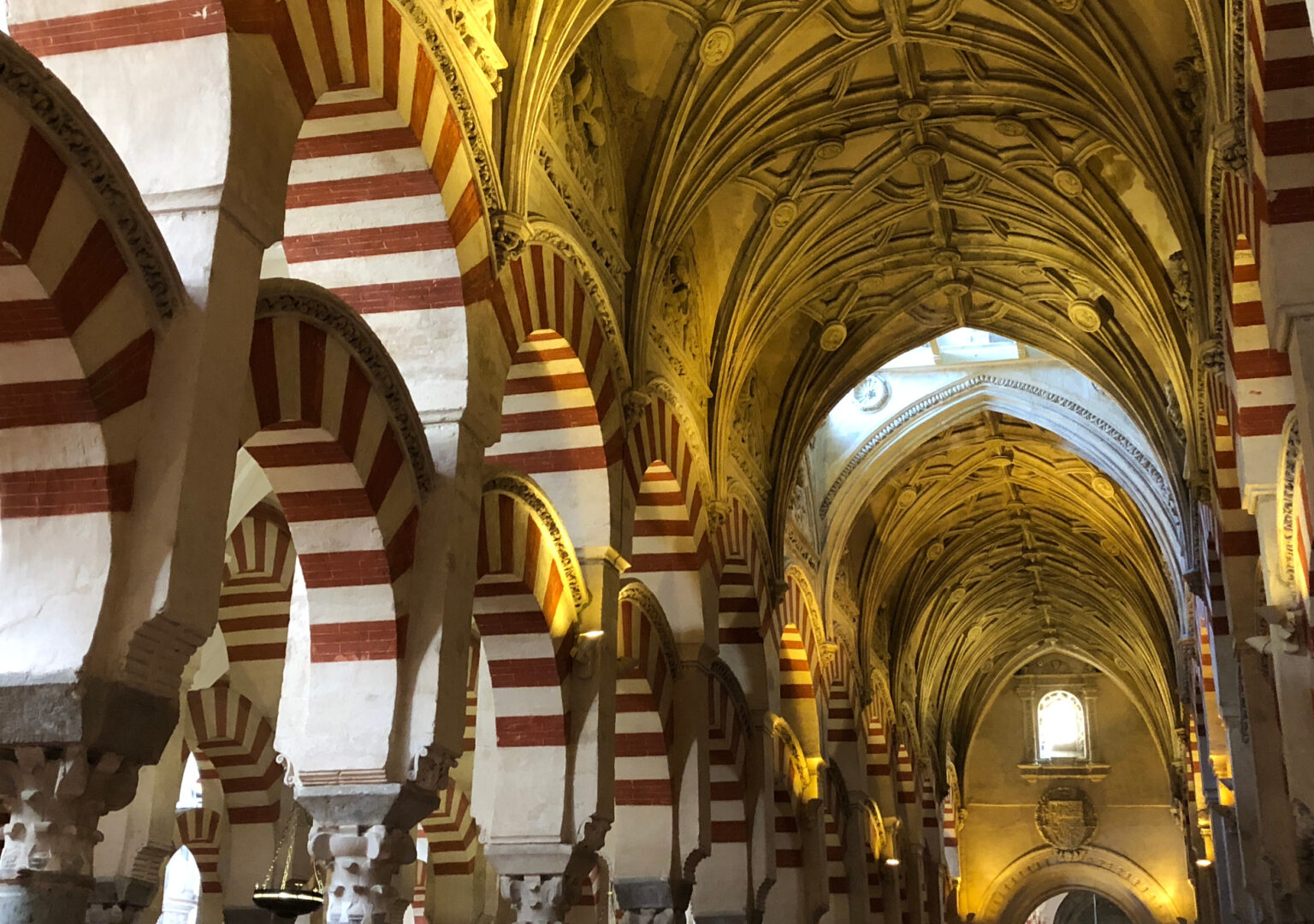
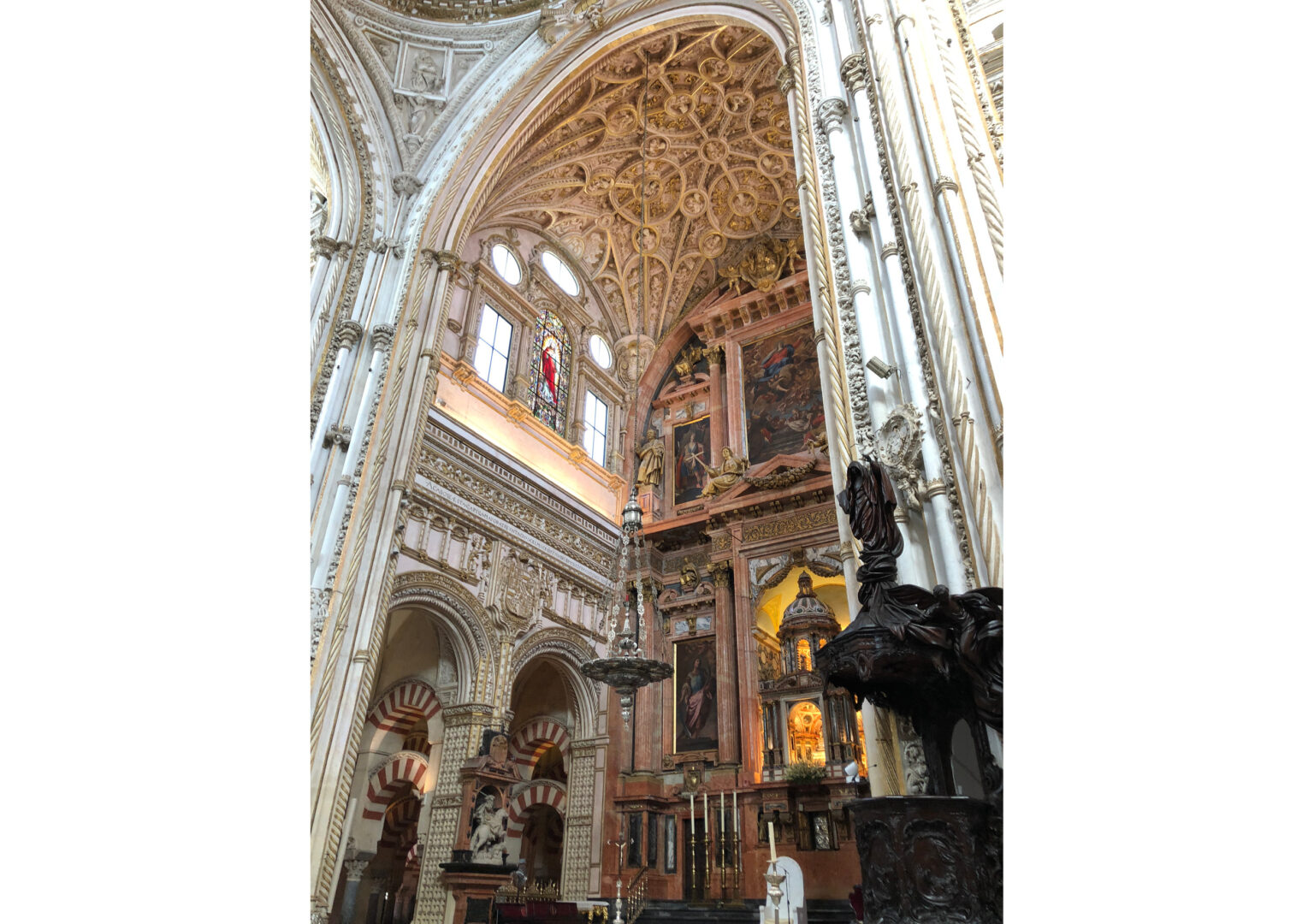
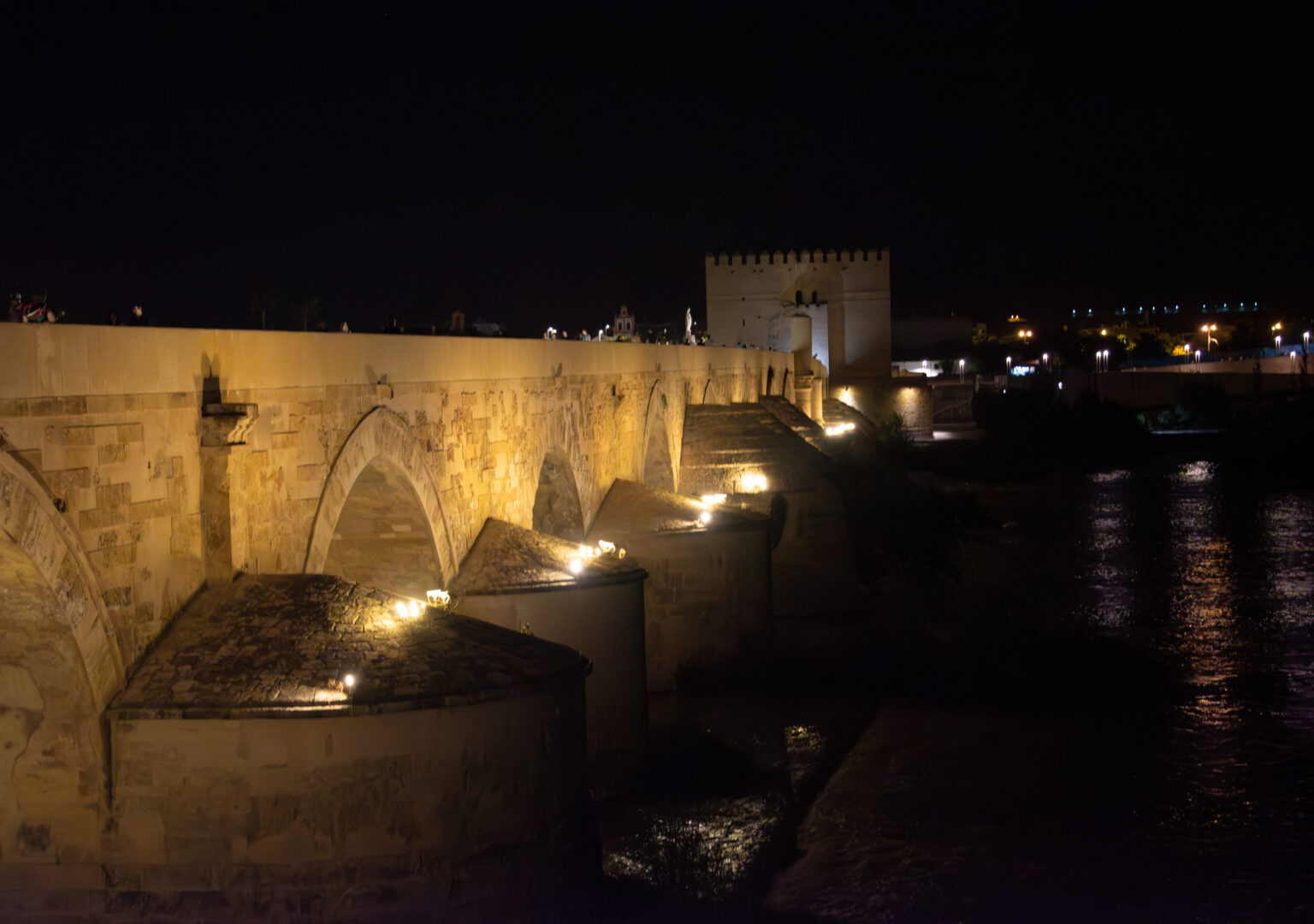
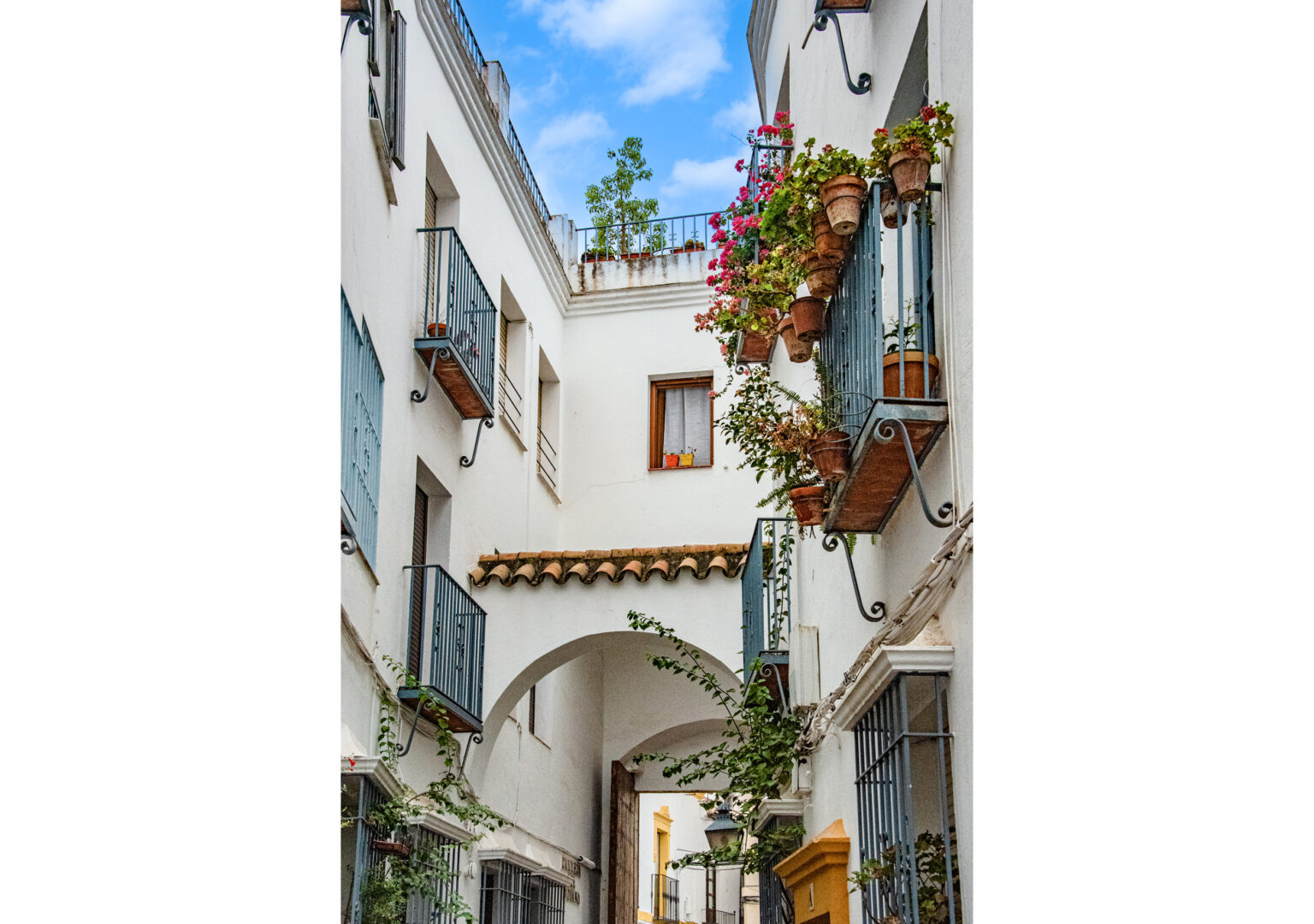
A few hundred years later, church architects and craftsmen erected a high altar that broke through the roof of the mosque to complete the church––a truly amazing feat of seamlessly imposing the architecture and art of one religion into that of another (the enemy’s, no less). The entire arrangement works beautifully. Still, I found the cathedral area gaudy in appearance, compared to the serene reverence of the mosque.
Nearby the sixteen-arch Roman bridge, built in the first century A.D. spans the Guadalquivir River. Historians consider the bridge to be a premier example of expert Roman engineering, though it’s been rebuilt several times to its original specifications. The bridge has UNESCO’s stamp of approval.
Old town’s Jewish Quarter holds a charm you won’t find elsewhere easily. We wandered its narrow, meandering lanes punctuated with colorful doorways, overhead arches, balconies, prolific window boxes of geraniums, and intricate pavement designs of granite and small stones set in cement. Many shops of crafts, souvenirs, and small restaurants pulled me inside. Try Horma, a small informal restaurant, with outside dining near our hotel for their pork cheeks, fabulous Iberian ham, and chicken dishes.
Next Stop: Seville
Returning to the Córdoba train station, we boarded another AVE high-speed train for the 58-minute ride south to Seville, the most vibrant city we visited. Seville is a standout for its beautiful and extensive architecture, cultural sites, and “big city” street life. As we discovered, three nights in a comfortable Airbnb on Reyes Catálocos Boulevard just weren’t enough time to enjoy Seville’s bounty.
Considered by many as Spain’s most beautiful city, Seville contains Europe’s largest historic center. Its buildings exhibit the best examples of Mudéjar architecture––a mixture of Moorish and Christian styles. The result: a city of exceptional elegance and grace.


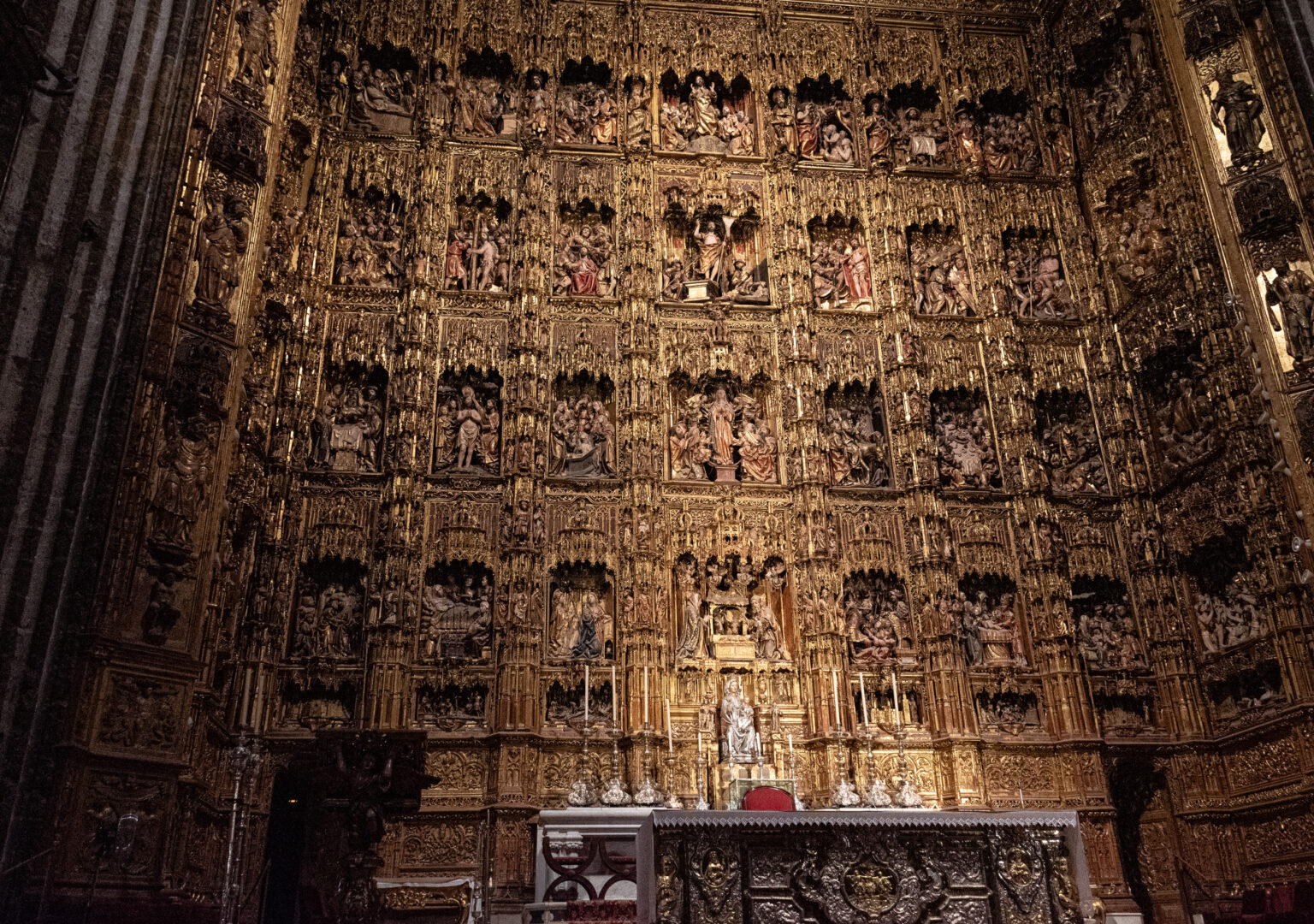
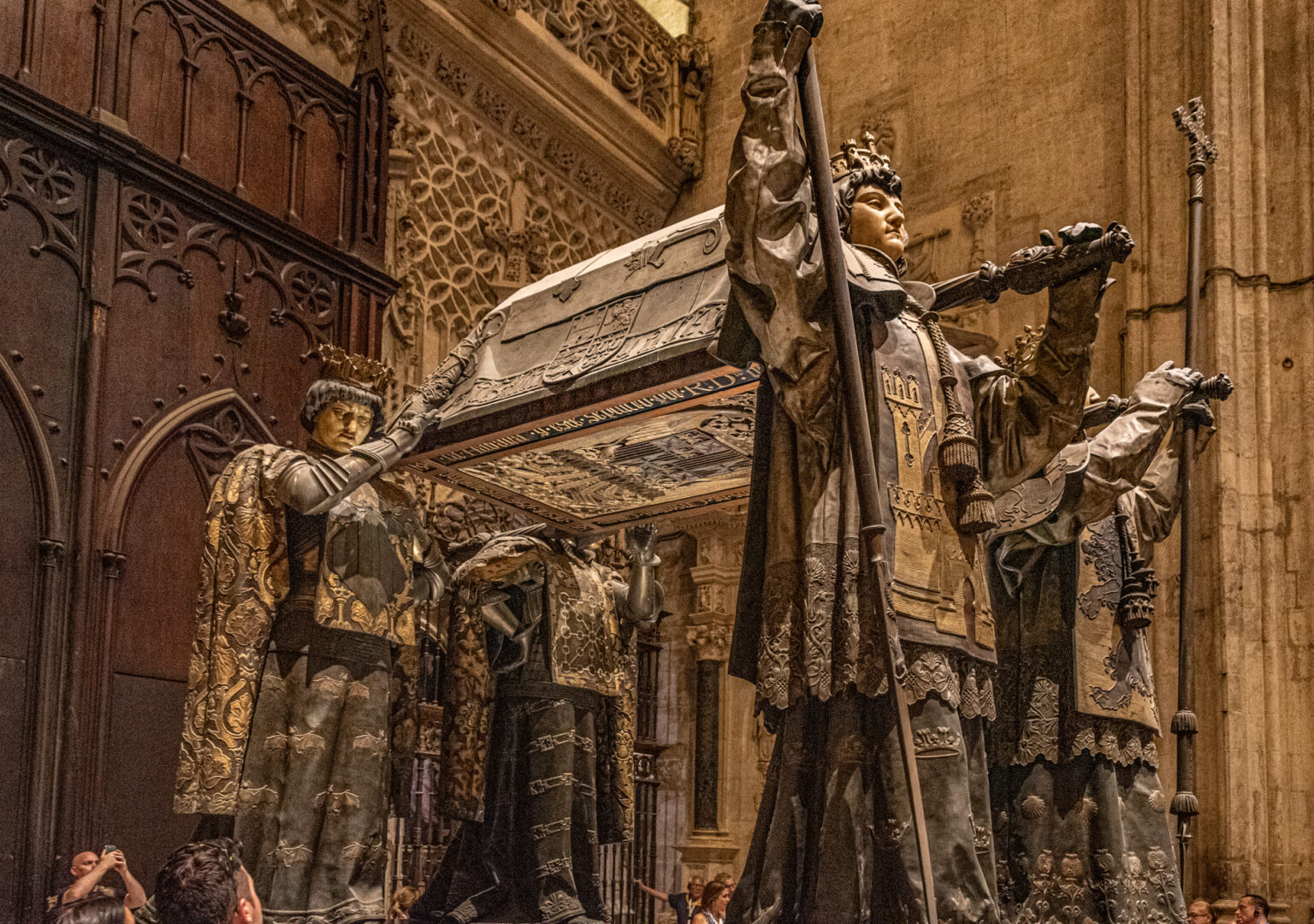
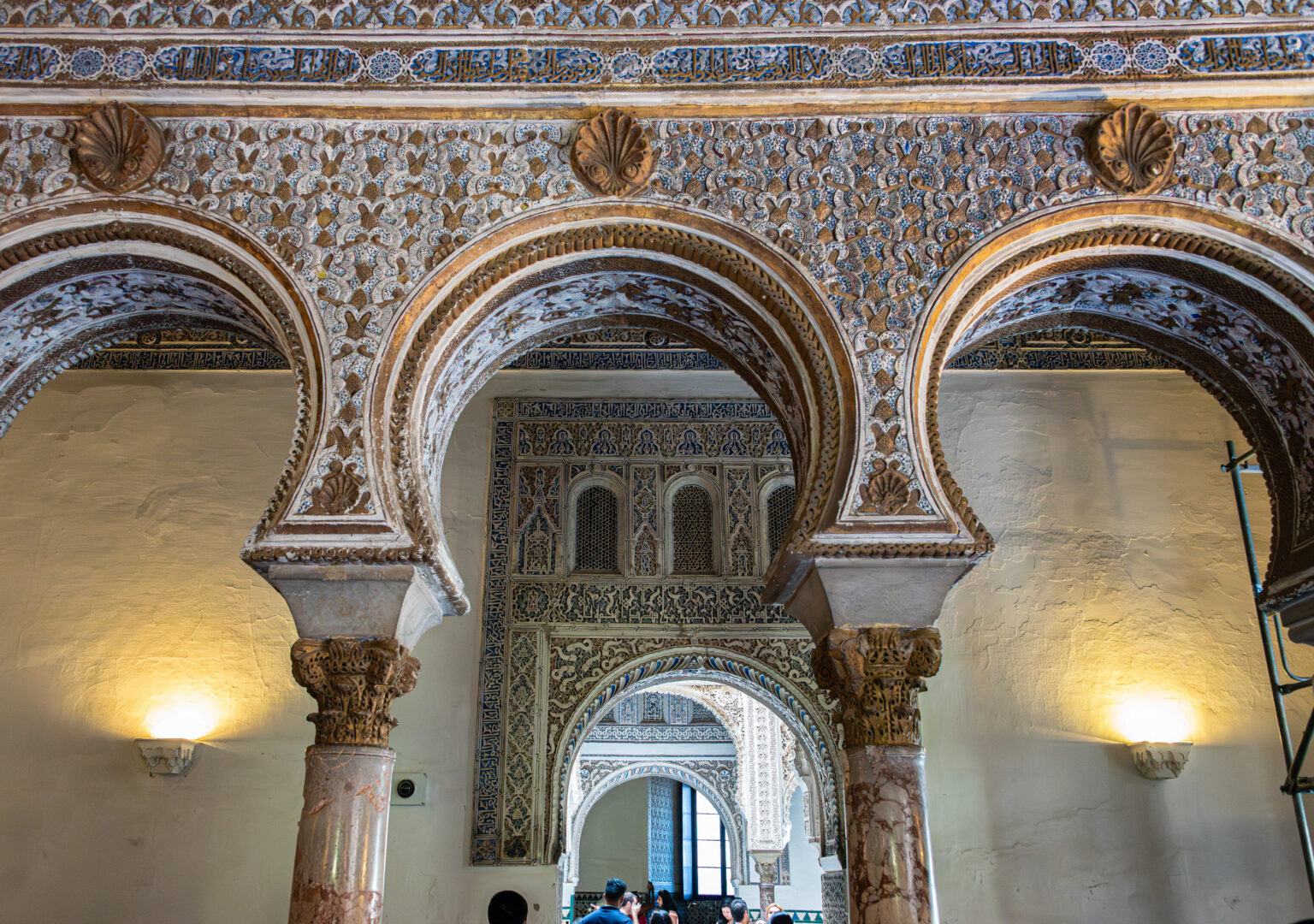
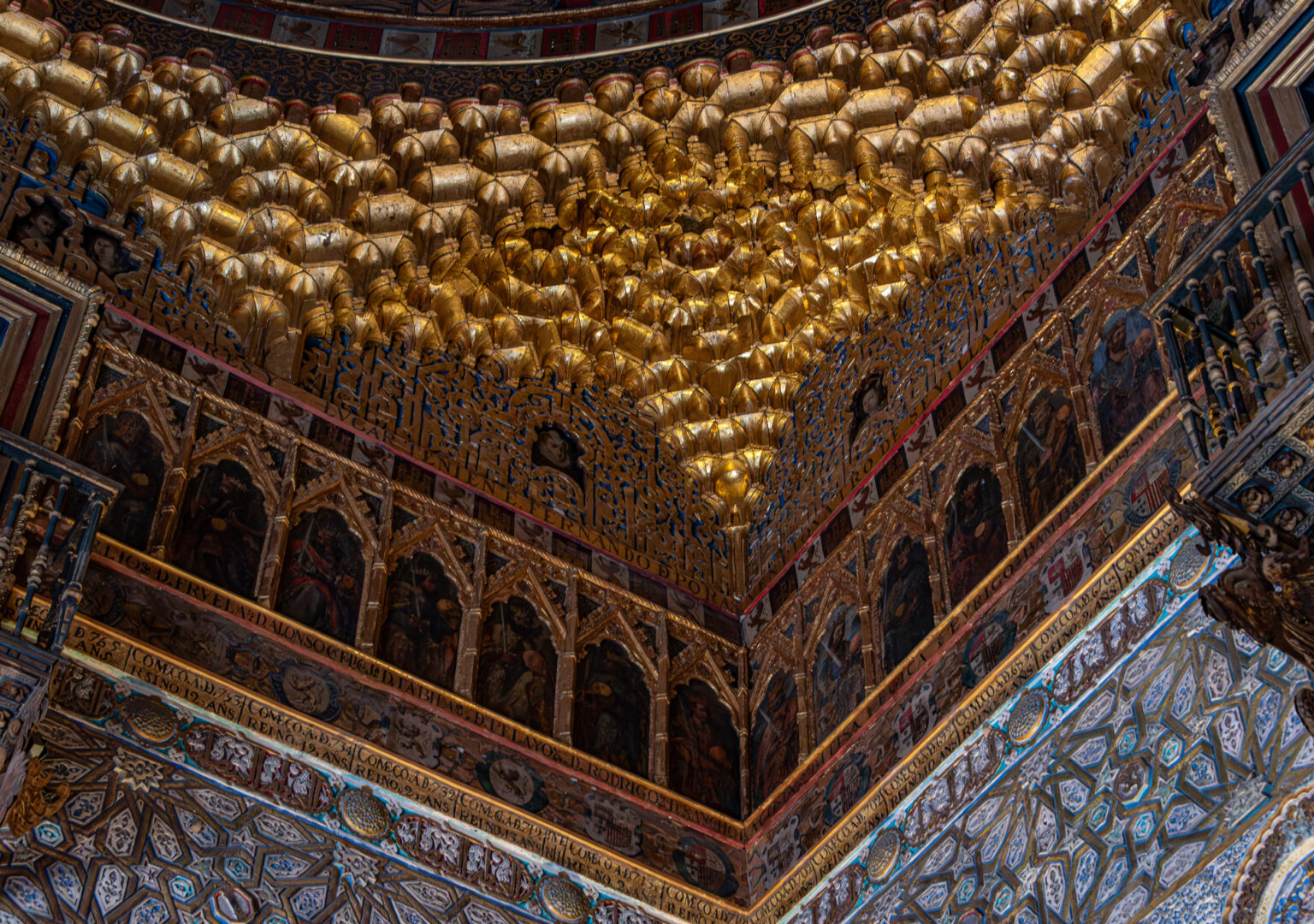
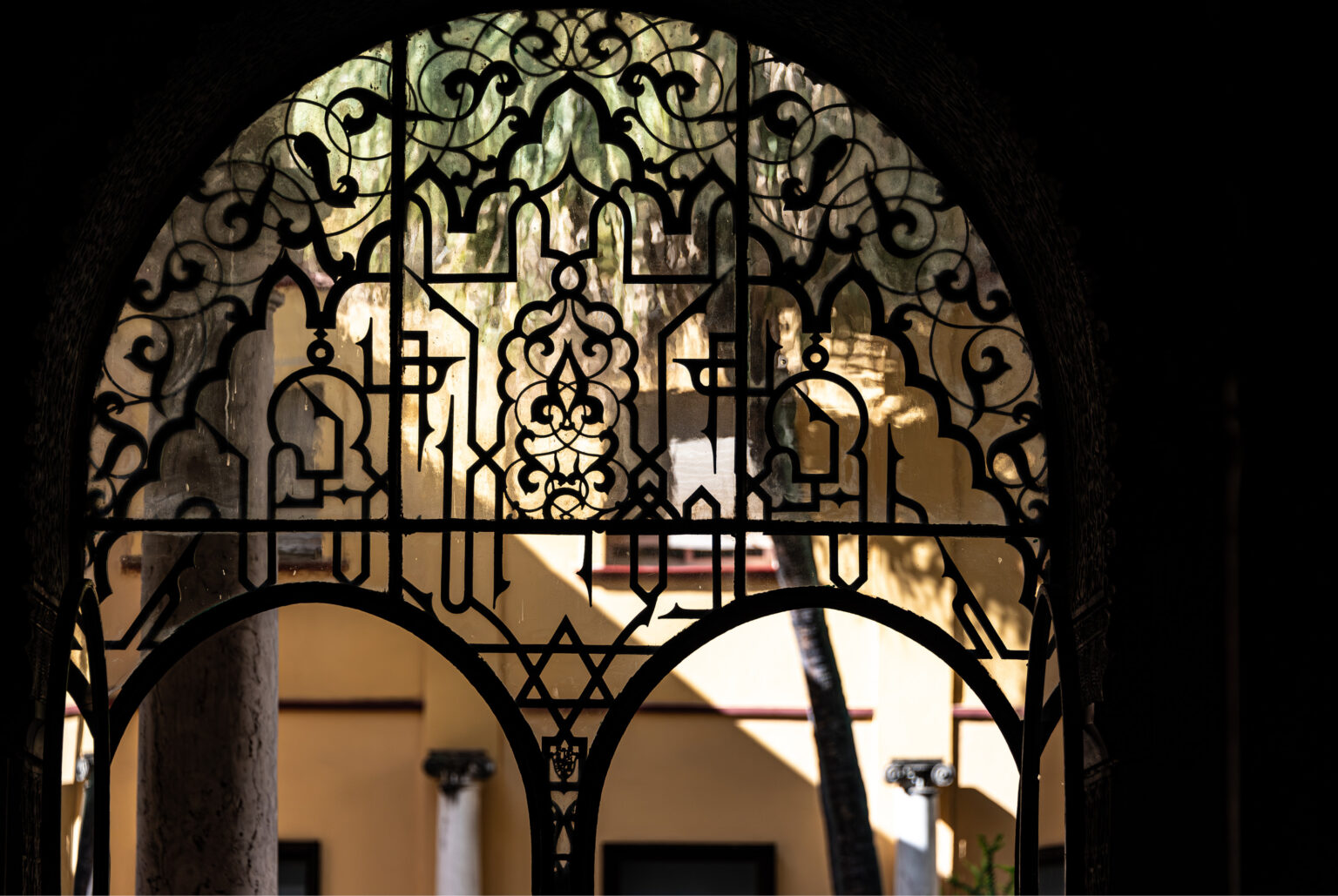
Seville’s Cathedral commands the skyline
Among crowds of ogling sightseers, we strolled the grand Avenida de la Constitución lined with eye-catching architectural gems, finally reaching the Plaza del Triunfo, site of Seville’s Cathedral. I understand if your tolerance for visiting churches has its limits, as mine does. Trust me, you must see this one; it ranks near the top of the city’s magnificent sites.
The Cathedral of St. Mary of the See is the third largest church in the world, after St. Peter’s in Rome and London’s St. Paul. A former mosque destroyed and rebuilt as a church by a combination Gothic and Renaissance style in 1507, the architects kept the mosque’s minaret and modified it into the Giralda Tower belfry, which you can climb. I did not.
The Cathedral’s admission line snaked halfway around the building, a challenge to wait under the intense, unforgiving late-summer sun. Here comes thirty-year-old Victor, a Spaniard and veteran European traveler (with impeccable unaccented English), offering his tour guide services and credentials as he moved along the queued line, with the promise of immediate entrance. We jumped at the opportunity and jumped the queue; we entered immediately, a newly married Irish couple from Dublin joining us.
Stepping inside, the immense, cavernous interior dwarfed me––a successfully effective use of space to humble supplicants, swallowing voices from wandering tour groups and producing a cacophony of muffled echoes.
The Royal Chapel, Treasure Room, tombs, altars, sanctuaries and valuable religious paintings together tell the story of Christianity. At times, it’s a trove of overwhelming religious eye candy. Amazing Retablo Mayor, the main chapel altarpiece, stops the show. Made entirely of hand-carved wood completed in 1564, the piece soars 66 feet by 60 feet. Its compartments feature intricate vignettes, covered in gold, that depict the life of Jesus Christ. I especially enjoyed the full-sized bronze tableau of four men carrying Christopher Columbus’ casket. Allegedly he’s buried here, but DNA samples show its only 20% of him.
Spectacular Real Alcázar Palace Exhibits Mudéjar Architecture
Victor performed his duties so well that we hired him for the next day to guide us through the most magical complex of buildings I’d seen in all my travels: the UNESCO World Heritage Real Alcázar. In Arabic, al-qasr means fortress or palace. The Royal Palace is the oldest of its kind still in use in Europe. King Felipe V of Spain stays in its upper chambers when he visits.
In short: IT. IS. SIMPLY. BREATHTAKING.
First built by the Moors in the eleventh century as a residence and fortress to protect the city, Christians arrived and impolitely asked the Moors to vacate. They recognized the palace’s incomparable beauty––the detail of archways, wall decorations, ceilings, fountains, and water features. Over the following centuries, several kings built additions to the complex to create a Christian palace in the Mudéjar style. I shook my head constantly, marveling at the cultural artistry of the Alcázar. It’s worth a special visit to Seville to experience this creation.
Both the Cathedral and the Alcázar sit at the edge of the old Jewish quarter, called the Barrio de Santa Cruz. It’s yet another charming warren of wandering lanes among medieval buildings that house tapas bars and trinket shops, along with upscale clothing stores and boutique hotels.
Known locally as the Juderia, Santa Cruz is the home of the Flamenco Dance Museum. One evening, three dancers, two singers, and a guitarist demonstrated this dynamic art form, which originated in Andalucía. Seville proclaims itself flamenco’s birthplace.
Spaniards eat late, with many restaurants not opening until 9:00 p.m. After the flamenco performance, we grabbed tapas, then headed outside to engage in paseo. In most of Spain, we found this cultural practice in the early evening a genteel social custom. Locals, often smartly dressed, leisurely stroll about, chatting, laughing, and meeting friends and acquaintances along the way––people-watching at its best.
Even More Spanish Towns to Explore by Train
We reluctantly had to leave Seville so soon and continue south to the Spanish White Hill Towns, where train tracks don’t go. However, if you have the time to keep traveling through Andalucía by train, consider Granada— famous for its Alhambra palace or Malaga, one of Spain’s seaside resorts.
Put these three cities––Segovia, Córdoba, and Seville––on your list to visit by train when you make your plans to visit Madrid. I know the next time I visit Spain, the train system will be my transportation option of choice.
Buen viaje!
If You Go
- Check out spain-traveller.com first to get a good overview of Spain’s extensive train system and to understand the different types of trains.
- For distance, spring for the high-speed trains, the largest system of its kind in Europe. Three lines now operate in Spain. We used Renfe’s AVE trains (state-owned).
- Get yourself to Madrid! Once there, refer to rail.ninja for timetables and to make reservations. The price of train tickets varies with the times of departure for particular destinations.
For this journey, (estimated ticket prices, depending on the departure time, updated to August, 2023):
- Madrid–>Segovia––>Madrid: 27 minutes each way; $54 total
- Madrid––>Córdoba: 1 hour, 57 minutes; $110
- Córdoba––>Seville: 58 minutes; $38

